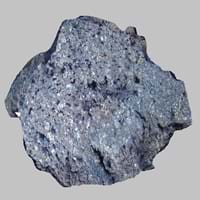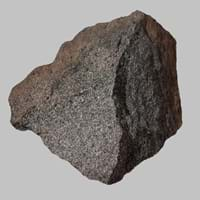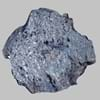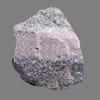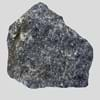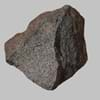Definition
Mugearite is a type of oligoclase bearing basalt, also comprising of olivine, apatite, and opaque oxides
Larvikite is an igneous rock and a variety of monzonite, notable for the presence of thumbnail-sized crystals of feldspar
Origin
Skye, Scotland
Larvik, Norway
Discoverer
Alfred Harker
Unknown
Etymology
From mugear + -ite
From the town of Larvik in Norway, where this type of igneous rock is found
Class
Igneous Rocks
Igneous Rocks
Sub-Class
Durable Rock, Medium Hardness Rock
Durable Rock, Hard Rock
Other Categories
Opaque Rock
Coarse Grained Rock, Fine Grained Rock, Medium Grained Rock, Opaque Rock
Texture
Glassy, Massive, Porphyritic, Scoriaceous, Vesicular
Phaneritic
Color
Black, Brown, Light to Dark Grey
Black, Brown, Light to Dark Grey, White
Durability
Durable
Durable
Scratch Resistant
Yes
Yes
Appearance
Dull and Soft
Shiny
Interior Uses
Floor Tiles, Flooring, Homes, Hotels
Decorative Aggregates, Homes, Interior Decoration
Exterior Uses
As Building Stone, Garden Decoration
As Building Stone, As Facing Stone, Garden Decoration, Office Buildings, Paving Stone
Other Architectural Uses
Curbing
Curbing
Construction Industry
As Dimension Stone, Cobblestones, Rail Track Ballast, Roadstone
As Dimension Stone, Cement Manufacture, Construction Aggregate, for Road Aggregate
Medical Industry
Not Yet Used
Not Yet Used
Antiquity Uses
Artifacts, Monuments, Sculpture
Artifacts, Monuments, Sculpture
Commercial Uses
Creating Artwork
Cemetery Markers, Commemorative Tablets, Creating Artwork
Types
Alkaline Basalt, Boninite, High Alumina Basalt, Mid Ocean Ridge Basalt (MORB), Tholeiitic Basalt, Basaltic trachyandesite, Mugearite and Shoshonite
Quartz Monzonite, Syenite and Diorite
Features
Has High structural resistance against erosion and climate, Very fine grained rock
Available in lots of colors, Is one of the oldest rock
Archaeological Significance
Famous Monuments
Data Not Available
Data Not Available
Famous Sculptures
Data Not Available
Data Not Available
Pictographs
Used
Not Used
Petroglyphs
Used
Not Used
Formation
Mugearite forms when lava reaches the Earth's surface near an active volcano. The temperature of lava is between 1100 to 1250° C when it gets to the surface.
Larvikite is a fine-grained, hard rock which is a type of metasomatite, essentially altered basalt. It forms with or without crystallization, either below the surface as intrusive rocks or on the surface as extrusive rocks.
Mineral Content
Olivine, Plagioclase, Pyroxene
Albite, Amphibole, Apatite, Biotite, Feldspar, Hornblade, Ilmenite, Magnetite, Muscovite or Illite, Olivine, Plagioclase, Pyroxene, Quartz, Sulfides, Titanite, Zircon
Compound Content
Aluminium Oxide, CaO, Iron(III) Oxide, FeO, Potassium Oxide, MgO, MnO, Sodium Oxide, Phosphorus Pentoxide, Silicon Dioxide, Titanium Dioxide
Aluminium Oxide, CaO, Iron(III) Oxide, FeO, Potassium Oxide, MgO, MnO, Sodium Oxide, Phosphorus Pentoxide, Silicon Dioxide, Titanium Dioxide
Types of Metamorphism
Burial Metamorphism, Impact Metamorphism
Cataclastic Metamorphism, Impact Metamorphism, Regional Metamorphism
Types of Weathering
Biological Weathering, Chemical Weathering
Biological Weathering, Chemical Weathering, Mechanical Weathering
Types of Erosion
Not Applicable
Chemical Erosion
Grain Size
Not Applicable
Medium to Fine Coarse Grained
Fracture
Conchoidal
Not Available
Streak
White to Grey
White
Porosity
Less Porous
Less Porous
Luster
Not Available
Subvitreous to Dull
Cleavage
Not Applicable
Not Available
Toughness
2.3
Not Available
Specific Gravity
2.8-3
2.8-3
Transparency
Opaque
Opaque
Density
2.9-3.1 g/cm3
2.9-2.91 g/cm3
Resistance
Heat Resistant, Pressure Resistant, Wear Resistant
Heat Resistant, Impact Resistant, Pressure Resistant
Deposits in Eastern Continents
Asia
India, Russia
Not Yet Found
Africa
South Africa
Not Yet Found
Europe
Iceland
Bulgaria, England, Germany, Norway, Romania, Switzerland
Others
Not Yet Found
Not Yet Found
Deposits in Western Continents
North America
Canada, USA
USA
South America
Brazil
Argentina, Bolivia, Brazil, Chile, Colombia, Ecuador, Peru
Deposits in Oceania Continent
Australia
Not Yet Found
New South Wales, New Zealand, Queensland, South Australia, Western Australia
Mugearite vs Larvikite Characteristics
Though some rocks look identical, they have certain characteristics which distinguish them from others. Characteristics of rocks include texture, appearance, color, fracture, streak, hardness etc. Mugearite vs Larvikite characteristics assist us to distinguish and recognize rocks. Also you can check about Properties of Mugearite and Properties of Larvikite. Learn more about Mugearite vs Larvikite in the next section. The interior uses of Mugearite include Floor tiles, Flooring, Homes and Hotels whereas the interior uses of Larvikite include Decorative aggregates, Homes and Interior decoration. Due to some exceptional properties of Mugearite and Larvikite, they have various applications in construction industry. The uses of Mugearite in construction industry include As dimension stone, Cobblestones, Rail track ballast, Roadstone and that of Larvikite include As dimension stone, Cement manufacture, Construction aggregate, For road aggregate.
More about Mugearite and Larvikite
Here you can know more about Mugearite and Larvikite. The life cycle of a rock consists of formation of rock, composition of rock and transformation of rock. The composition of Mugearite and Larvikite consists of mineral content and compound content. The mineral content of Mugearite includes Olivine, Plagioclase, Pyroxene and mineral content of Larvikite includes Albite, Amphibole, Apatite, Biotite, Feldspar, Hornblade, Ilmenite, Magnetite, Muscovite or Illite, Olivine, Plagioclase, Pyroxene, Quartz, Sulfides, Titanite, Zircon. You can also check out the list of all Igneous Rocks. When we have to compare Mugearite vs Larvikite, the texture, color and appearance plays an important role in determining the type of rock. Mugearite is available in black, brown, light to dark grey colors whereas, Larvikite is available in black, brown, light to dark grey, white colors. Appearance of Mugearite is Dull and Soft and that of Larvikite is Shiny. Properties of rock is another aspect for Mugearite vs Larvikite. The hardness of Mugearite is 6 and that of Larvikite is 6-7. The types of Mugearite are Alkaline Basalt, Boninite, High Alumina Basalt, Mid Ocean Ridge Basalt (MORB), Tholeiitic Basalt, Basaltic trachyandesite, Mugearite and Shoshonite whereas types of Larvikite are Quartz Monzonite, Syenite and Diorite. Streak of rock is the color of powder produced when it is dragged across an unweathered surface. The streak of Mugearite is white to grey while that of Larvikite is white. The specific heat capacity of Mugearite is 0.84 kJ/Kg K and that of Larvikite is 0.92 kJ/Kg K. Depending on the properties like hardness, toughness, specific heat capacity, porosity etc., rocks are resistant to heat, wear, impact, etc.Mugearite is heat resistant, pressure resistant, wear resistant whereas Larvikite is heat resistant, impact resistant, pressure resistant.
